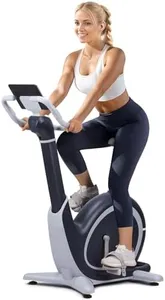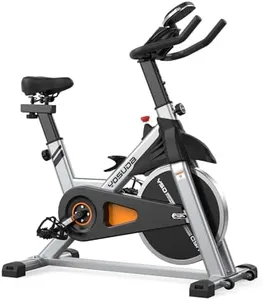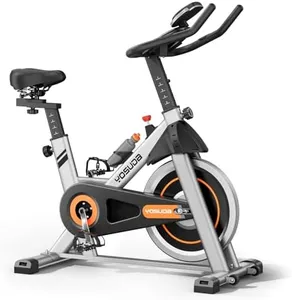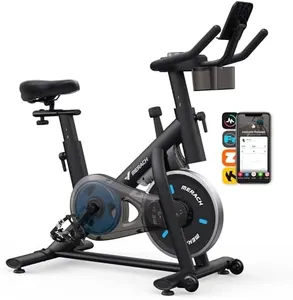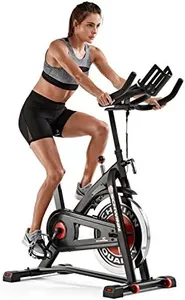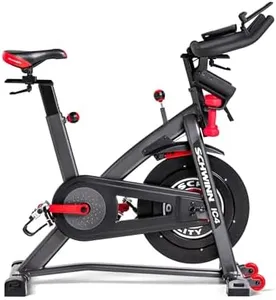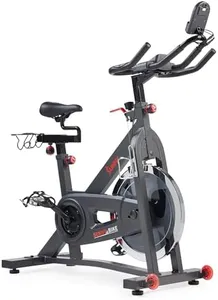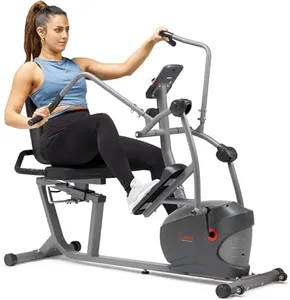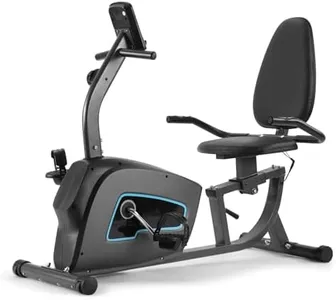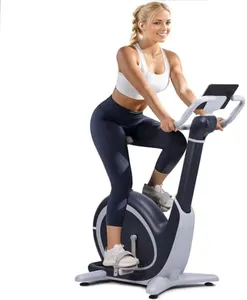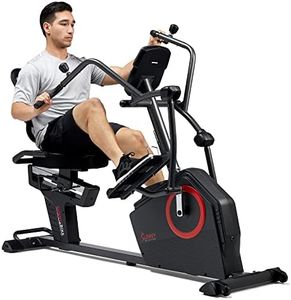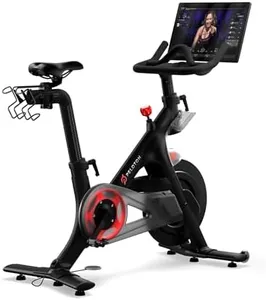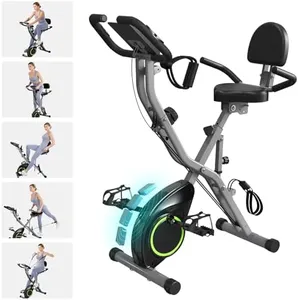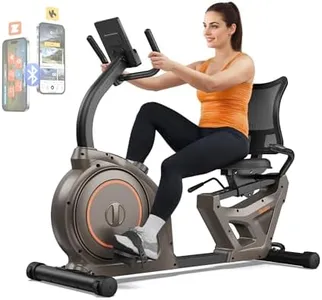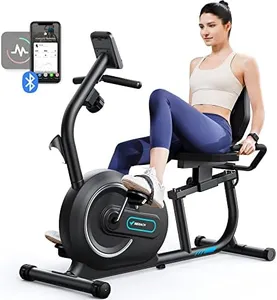10 Best Exercise Bike 2025 in the United States
Our technology thoroughly searches through the online shopping world, reviewing hundreds of sites. We then process and analyze this information, updating in real-time to bring you the latest top-rated products. This way, you always get the best and most current options available.

Our Top Picks
Winner
YOSUDA Indoor Cycling Bike Stationary - Cycle Bike with Ipad Mount &Comfortable Seat Cushion (Gray)
Most important from
22147 reviews
The YOSUDA Indoor Cycling Bike is a solid choice for those looking to enhance their indoor exercise routine. With a 35-pound flywheel and a durable steel frame, it promises stability and a smooth, quiet ride, making it suitable for apartment living. The bike’s adjustable features, including the non-slip handlebar and padded seat, cater well to various body types, supporting inseam heights from 25 to 39 inches. It can accommodate users up to 300 pounds, which is a plus for many individuals.
One of the standout features is the LCD monitor, which tracks key metrics such as time, speed, distance, calories burned, and odometer readings. The included tablet holder is a thoughtful addition, allowing you to enjoy entertainment while working out. Safety features like adjustable cage pedals and a quick-stop resistance bar add to the bike's usability.
There are some drawbacks. The resistance mechanism is friction-based, which might not provide the same smooth experience as magnetic resistance systems found in higher-end bikes. Additionally, some users might find the assembly instructions a bit challenging, despite the availability of online videos. In terms of portability, the transport wheels make it easier to move, but the bike’s weight of nearly 68 pounds could still pose a challenge for some users when relocating it. The bike's warranty covers parts for one year, but it may lack extended coverage on the overall framework, which could be a concern for potential buyers.
Most important from
22147 reviews
YOSUDA Indoor Cycling Bike - 2023 Version - Stationary Bike with Tablet Mount & Comfortable Seat Cushion
Most important from
2143 reviews
The YOSUDA Indoor Cycling Bike stands out as a solid choice for home exercise enthusiasts. It features a sturdy steel frame and a 30 lbs flywheel which contribute to a stable and smooth ride, making it suitable for intense workouts without causing disruption to others in the home. The magnetic resistance system offers 8 levels of adjustability, allowing users of varying fitness levels to tailor their workout intensity, which is a great plus for families with different needs.
Comfort is prioritized with a padded seat that adjusts in multiple directions, accommodating users from 4’8” to 6’1”, enhancing the bike's usability for a wide range of people. Additional features like the LCD monitor for tracking workout stats and a tablet holder for entertainment during exercise add to the user experience.
The bike weighs 64 pounds, which may be cumbersome for some to move, despite having transport wheels. Also, while the maximum weight capacity is commendable at 300 lbs, those seeking advanced features like more extensive connectivity options or a heavier flywheel might find it lacking. Some users may also prefer a more advanced display with Bluetooth connectivity or app integration for tracking their fitness progress.
The YOSUDA Indoor Cycling Bike is a great fit for individuals and families looking for a reliable and comfortable indoor cycling option. It combines stability, functionality, and user-friendly features, although those desiring high-tech integrations or extremely heavy flywheels may want to explore other options.
Most important from
2143 reviews
MERACH Exercise Bike, Brake Pad Stationary Bike with Exclusive App, Low Noise Indoor Cycling Bike with 300lbs Weight Capacity, Tablet Mount and Fitness Courses for Weight Loss
Most important from
1021 reviews
The MERACH Exercise Bike offers a friction resistance mechanism which is beneficial for those looking for adjustable intensity during workouts. It comes with a belt drive system that ensures a quiet and smooth operation, making it suitable for use without disturbing others at home. The bike has a maximum weight capacity of 300 pounds and features a stable dual-triangle frame, enhancing its durability and stability, which is great for users of all fitness levels.
The adjustability of the handlebar and seat allows it to accommodate users between 4'8" to 6'2" in height, offering a more personalized and comfortable workout experience. The enhanced LED monitor provides real-time tracking of essential workout metrics such as time, speed, distance, and calories, which is helpful for monitoring progress and setting goals. The inclusion of the Merach and FantomFite apps, along with compatibility with popular fitness platforms like KINOMAP and Zwift, adds value by allowing users to track and sync their workouts with Google Fit and Apple Health.
Comfort features like advanced shock absorption and a water bottle holder ensure an enjoyable and convenient workout session. However, the friction resistance mechanism might require more maintenance compared to magnetic resistance, and the bike's weight of 27 kilograms may make it less portable for some users. The bike is also battery-powered, which might be a consideration for those who prefer a plug-in option. Despite these minor drawbacks, the MERACH Exercise Bike is a solid choice for those looking to achieve weight loss and body shaping goals while enjoying a quiet and stable ride at home.
Most important from
1021 reviews
Buying Guide for the Best Exercise Bike
Choosing the right exercise bike can significantly enhance your fitness journey. The key is to understand your fitness goals, space constraints, and personal preferences. By focusing on the right specifications, you can find an exercise bike that fits your needs and helps you stay motivated and comfortable during your workouts.FAQ
Most Popular Categories Right Now
